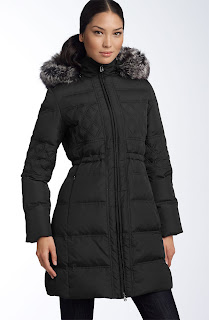For my Hong Kong internship this summer, I worked for Ann
Taylor Sourcing Far East Ltd. in the Ann Taylor Factory (ATF) and LOFT Outlet
(LOS) division. Specifically, I was on the merchandising team for woven styles
for ATF refined, ATF suits, ATF dresses, LOS refined and LOS dresses. The
refined lines include best selling styles from Ann Taylor and LOFT that have
been modified to 2nd tier quality to be sold at a lower price point.
There are no Ann Inc. stores in Asia, nor does Hong Kong have any in house
designers. All designs come from the design team in New York. The New York
office has the final say on everything from fabric approval, to color matching,
to trims. Because of this, we are in constant communication with our
counterparts in New York.
 |
These are the color standards and pattern artwork sent from
our counterparts at the New York office. I helped to make physical copies to
pass along to the mill and factory, as well as digital copies to store in our
shared K drive.
|
At the Hong Kong office, our main activities
can be broken down into development and production. Development involves fabric
sourcing, line building, ordering sample yardage, line review samples, trim sourcing,
and approving print or dye colors. Production activities include approving
trims and ordering them in bulk, the fitting process, bulk fabric testing,
garment production and shipping. Although development and production are two
distinct areas, it is difficult to separate the two because both occur
simultaneously. For example, while we may be ordering sample yardage for one style, we are
also getting zippers approved for another style. Even styles from the same line
can be at drastically different phases of completion. Throughout my internship,
I worked on the winter 2013 and spring 2014 lines.
 |
I helped to send these two trim samples to the design team
in New York so they could decide which finish they preferred for one of the
Spring '14 ATF refined styles. They chose blacken nickel, but ended up using
antique silver on another style.
|
My daily responsibilities involved uploading fabric
information sheets (FIS) and development test reports as they were completed. I
assisted in communications with textile mills, factories, and our counterparts
in New York. I placed orders for sample yardage and sent the color standards to
mills for them to match them as closely as possible. I requested cost information and lead times from factories to coordinate sample development and
delivery. When I communicated with New York, I asked them to place sample
requests and facilitated the shipment of trim samples and line review samples.
Fashion really is a global industry and I
corresponded with people from New York, China, and Indonesia on a regular
basis. Everyone in my office was constantly juggling multiple tasks and by the
end, I had to prioritize my list of tasks based on the ever-looming deadlines,
as well. I am so thankful for everything I have learned throughout this
experience and I feel confident that fashion is the perfect industry for me.
Despite the stress of deadlines, I tend to thrive under pressure. Most
importantly, my career in fashion will always be filled with new and exciting
challenges.
This fabric passed the initial inspection, but the factory
found a flaw during sample making. The slight skew of the pattern made it so
the pattern did not line up properly. In order for it to line up, the skirt
would pucker along the side seam. In this situation, the New York office must
choose whether to proceed anyway or to drop the style from the line.
Angelina DiFrancesco
Ann Taylor Sourcing Far East Ltd.
























